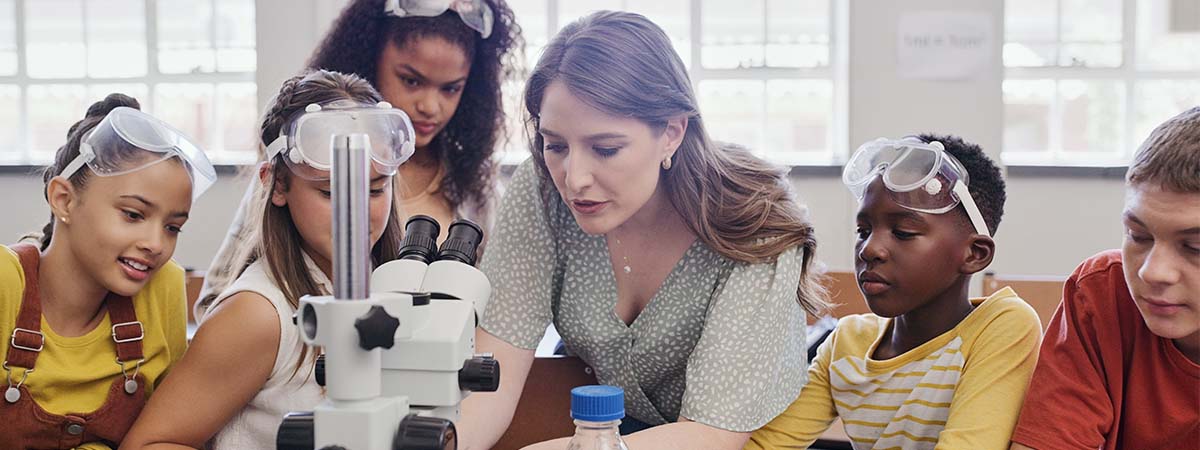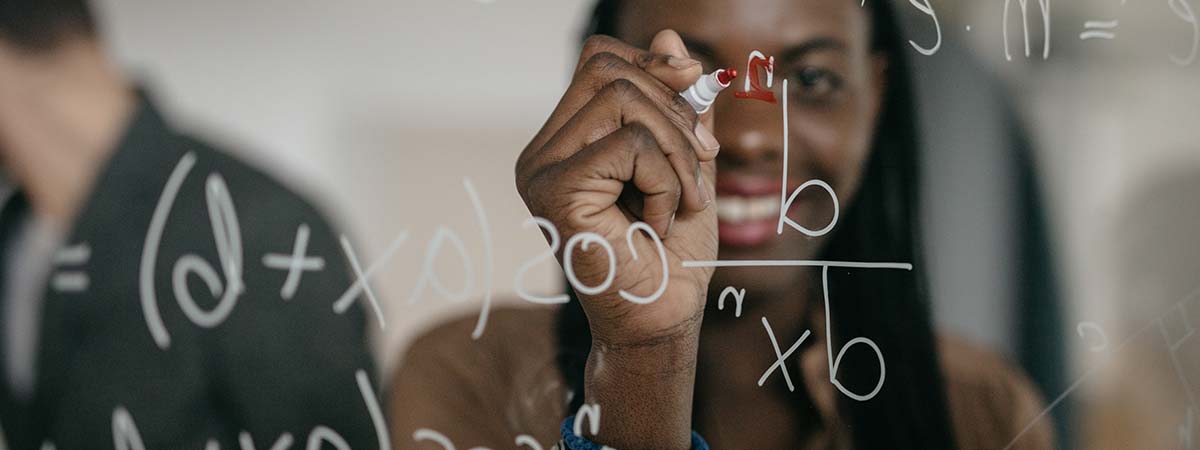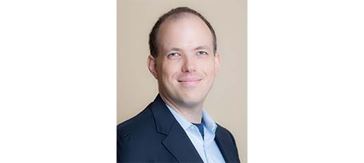An Example of STEM Enrichment Programs
A conversation with Daniel Zaharopol
Careers in science, technology, engineering and mathematics (STEM) pay well, but preparing for them requires what economists often describe as sequential human capital investments students need to build the foundation for these careers in layers of learning. What does it take to build the early foundations, particularly for underserved students, so they have a chance to pursue careers in STEM?
To gain some insight on this question, I recently spoke with Daniel Zaharopol. Mr. Zaharopol established Bridge to Enter Advanced Mathematics (BEAM) to create pathways for underserved students to become scientists, mathematicians, engineers, and computer scientists. The 12-year-old nonprofit provides intellectual, emotional, and financial support to help participants from sixth grade through college navigate the requirements of math courses needed for a STEM education. Mr. Zaharopol trained as a mathematician, but he has spent much of his career figuring out how to encourage an appreciation for the beauty and practicality of math—and higher achievement in it—among kids from modest backgrounds.
BEAM’s model starts with instruction of mathematical subjects that are typically not found in the standard curriculum and leverages a sense of community with its students so that they know they are among a group of peers who also love doing math. Students also receive support in nontraditional forms as needed: help with study skills, coaching and mentoring, assistance with college applications, money for textbooks and transportation to and from school, and connections to internships and job opportunities. BEAM instructors even work on the little things, such as the proper way to send a professional email or conduct a phone call.
The range of assistance hints at one of BEAM’s challenges: Student needs are difficult to predict. “There are so many obstacles in the way for students who don't have the support network that affluent kids have,” Mr. Zaharopol said. “It’s very hard to pinpoint, ‘here’s the one cause.’” One of the more effective ways BEAM has found to address these obstacles is to pair students with mentors who can help them work out solutions tailored to their circumstances.
The following conversation has been edited and condensed. Listen to an extended version of this conversation.

Bridge to Enter Advanced Mathematics (BEAM) is an innovative approach for supporting students entering into STEM fields
Daniel Zaharopol
BEAM is a program that works to create pathways for students from low-income and historically marginalized communities to become scientists, mathematicians, engineers, and computer scientists. Modeled a little bit on my own experience, we run summer programs for the students in the summers after sixth grade and seventh grade that are designed to be intensive introductions to mathematics and mathematical thinking, going well outside of the school curriculum.
So, it's not that we're trying to advance them in the school curriculum. We're doing something that's a little bit orthogonal that is really saying, “How can you go deeper in your reasoning skills? How can you see through to why things are true, why we do things in a particular way?”
A core part of our program is building a sense of community for the students so they know “there are other kids like me who love doing math.” I think one of the things that's unique about our program, aside from the mathematics we do, is that we continue to work with the students for years thereafter. We continue to provide programming and resources to every student who goes to our seventh grade summer program essentially up through college graduation. So, throughout that time, we are offering coaching on high schools; we are supporting with weekend classes for the students. We're helping with college admissions; we're providing coaching while they're in college.
I would say a lot of this program that I described is still a work in progress that we're creating. Our first cohort essentially graduated college two years ago, and we're doing a lot of refinements to the model. We're always learning from what we're doing. But the goal is to be there throughout, to try to provide everything the kids need to be successful, to really be thinking about, What are the core needs? What are the information gaps? What are the steps that we can make clear to them so that they can be successful going forward?
BEAM provides its students academic enrichment…
Daniel Zaharopol
If I can take a step back to the philosophy of the program a little bit. If you look at programs that are out there, at educational resources for kids, what you find is that among high-income or at least high-access students, there's this wealth of programs out there that are designed around enrichment and are designed around doing material that is not present in school.
And those students, when they get to college, they've had all of these kinds of problem-solving experiences. They've seen the language that comes up in different kinds of mathematics. They've developed a culture around it, and it gives them a huge leg up in college that is not identified in the course sequence that students usually take in high school.
And meanwhile, if you look at low-access students, what you often find is that they're told, “do well in school, and you'll be fine.” And that's the end of the conversation. And there's nothing about exploring other avenues of math, or I don't know, computer science, or astrophysics, or economics, or whatever thing might be of interest. There's nothing about exploring. There is instead the advice to just focus on standard courses: “Get good grades in algebra, pass your classes.”
And even then, 70 percent of high-minority high schools don't offer calculus. If you think about a STEM major getting to college without calculus background, that's quite difficult. And in New York City, 40 percent of high schools don't offer pre-calculus.
…but some support BEAM provides its students may seem unconventional
Dionissi Aliprantis
You made the comment that you want to provide everything your students need to be successful in their careers. So, I'm curious if you could describe some of those things that you're providing that maybe would have surprised you before you started doing this work. What might have surprised others that you now see as being fundamentally important?
Daniel Zaharopol
I'll give some examples of what we do and what we don't do, because I think both of those might be helpful.
In terms of what we do, there's academic content and there's also what we call “things you need to know,” which is, essentially, life skills at various points of the students' development. So, for example, as students are transitioning to high school, we try to support them with study skills, and how do you find a peer group in high school, and how do you navigate high school? How do you write a professional email and a phone call, and so forth. We also help students find other enrichment programs throughout their time in middle school and high school and research opportunities or intern opportunities in college. A lot of programs don't do this, but this is, in some sense, standard stuff.
We have a Last Dollar Fund, where if a student has some unmet financial need that is blocking them from something important, we will essentially cover that little bit of gap. So, for example, say that a student is admitted to a residential academic summer program somewhere and they get a full-tuition scholarship, but their travel isn't covered. Well, that can actually be a big blocker for our students, and so we'll just buy them the train ticket or bus ticket or plane ticket. Or if a college student, for example, doesn't have a textbook for their class, we can just make sure that they can get the textbook.
Dionissi Aliprantis
So you're kind of like a backstop there, or you're bringing the resources that higher-income parents would be able to bring.
Daniel Zaharopol
Exactly. And we try to target this to where it's high-leverage, relatively low-cost interventions. One example was, during COVID, we had a student who didn't have access to a desk. And so all of a sudden, they couldn't go to school, they couldn't go to the library, and they literally didn't even have a desk to work on at home. So we got them a, I don't know, $50 desk off of Amazon. And it more than satisfied the need, but that was a real blocker for that family during COVID.
BEAM’s students often have needs that are difficult to predict
Daniel Zaharopol
You know, I remember there was a student who was really successful in our program, great participant, did well in calculus in high school, went on to college, got there during COVID, and I think ended up taking calculus II three times. The first two times without a textbook. Again, this was during COVID, so the student had very little support and didn't tell us that he couldn't afford a textbook, and thus, didn't have a textbook. He ended up dropping out of college, at least for the time being, because of this struggle. And now, at the moment, I think he is on his way to a tech job through a bootcamp program that is well-geared towards this. We were able to find another path for this student. But there are so many obstacles in the way for students who don't have the support network that affluent kids have.
Dionissi Aliprantis
How much do you think the idiosyncratic obstacles fit into some broader bins representing known or understood challenges?
Daniel Zaharopol
I think what you see is an accumulation of challenges. It's very nice to say, "Here is the thing that knocked someone off course," but even with the student that I was just talking about, yes, there was the buying a textbook issue. But there was also all of the stress surrounding COVID and having to work at home in a crowded home environment. There was the broader lack of support that was present. There was being a student of color in that environment. All of these things together, I think, are factors, and I think it's very hard to pinpoint, “here's the one cause. Which honestly, it makes it hard to design a structured intervention, right? I think that a lot of the best interventions are ones that are going to connect someone with a mentor or with an advisor who can individually adapt to what's coming up.

BEAM takes its students on deep dives into applications of math
Daniel Zaharopol
I think of beauty and practicality as the parts that are intrinsic to math. I, for one, happen to think that practical math is also really beautiful math. And I think this is actually a very important distinction that education doesn't always get.
A lot of times when people think about, "How is math used?" there are two things that might happen. A math teacher might have a chart on the wall that says like, "This is what math you need for different careers," without really elaborating on how. Or, I think on standardized tests and a lot of textbooks, you get the problems about 99 watermelons and how they're whatever. Who actually has 99 watermelons? You get these types of word problems and people say, "Word problems is how math is used."
And that's not a reflection of reality, right? When we talk about math being useful, yes, there is some amount of math that is useful for shopping, for understanding statistics, and being an informed voter, and so forth. But, when we talk about math creating the opportunity to go into different careers for when you choose what career you're having, it's a much deeper connection. And so, when we do applied math, we're going to pick one topic and we're going to go deep into it. So we might have a class on genetics that is going to go deep into the combinatorics and the probability that's going on with genetics. Then students understand and they're really doing this topic. They're really seeing how the math is used, and it's not just word problems.
I have an astrophysics class that I love to teach, and that's another class where we can say, "We're going to really dive in and use this math from school," and you will see how one particular field of study uses it closely.
I think when people talk about how math is used, it's always these surface-level ideas, when what you really need is to go in deep. It’s not about making sure that every kid imagines a career that they might go into that has math. It’s about making clear that a lot of these careers you might want to choose do use math—and exposing them to how that works.
To improve math education in our K–12 system, start by supporting teachers
Dionissi Aliprantis
What are some of the lessons that you think that you've learned, and how they might apply to the broader K–12 or university education system? How would you think about STEM education? You talked about the fact that you all are actually doing math and working on curriculum that is outside the standard curriculum. And you talked about the ways that we could make the math curriculum more focused on beauty and incorporate more of that. How would you try to bring some of that in?
Daniel Zaharopol
I want to be clear that I'm not a policymaker, and what I'd like to do is put forth ideas I find interesting rather than say, "Aha! This is the way to do it." Because I think people are all too eager to say, "I know the way to do it."
All of these factors are interrelated. So if you were to produce a better curriculum, its effect is going to be limited if teachers aren't prepared to take advantage of that curriculum, and I mean prepared both mathematically and pedagogically to take advantage of that curriculum. And the curriculum has to be tied to whatever measures of success we're looking at because so much of education is driven by standardized testing, and schools are incentivized to get students up to passing level. And if the tests are not deep, then that means surface-level learning and rote procedural learning. So I do think you need an approach that's going to tackle all of this to some extent.
I would actually start, to some extent, with teachers, and I think we should have a system where teachers are able to spend a little bit more time in an apprenticeship learning from excellent teachers. Right now, you’re a student teacher for half a year or a year, where you're helping out a teacher for that time. And then you're thrust into a full course load in a school, and that's a really hard transition. That's not necessarily conducive to mastering the craft.
There are models in other countries where there are paired teaching assignments, where there are co-teachers, where I think you could really provide a better on-ramp to teaching and you could elevate teaching that's really excellent and use it as a model for future teachers. In that case, your model going into the classroom isn't so much, "How I learned it myself when I was in school," but there's more of a dialogue created between teachers on how things work. There's often such a vibrant community online of teachers who are sharing ideas and lessons and so forth, but it's, I think, a very small fraction of teachers that really actively engage in that.
If we could build these on-ramps, I think that would be much better for the education profession. It would provide avenues for career growth for teachers, as well, that I think is sorely needed in the profession for people who want to keep teaching but also want to see advancement in their career. This creates stages that provide that.
And then you have the opportunity to really say, "Now, we're going to provide a high-quality curriculum and there is a teaching force that's ready to make use of this curriculum." And that's a curriculum that I think really needs to be driven more by beauty—problems that are intrinsically interesting, and problems that are not procedural, where you have to think a little bit for each one about something new. The goal is for that act of thinking, which means that you are reflecting on the mathematics you've learned in a deeper way.
Hal Martin and Andrew Zajac contributed to this article.
The opinions expressed in this article are those of the participants and do not necessarily represent the views of the Federal Reserve Bank of Cleveland or the Board of Governors of the Federal Reserve System.
- Share

Daniel Zaharopol
Founder
Bridge to Enter Advanced Mathematics (BEAM)
Daniel Zaharopol is the Founder of Bridge to Enter Advanced Mathematics (BEAM), which he started to help students from all backgrounds find joy in math and achieve at a high level. Under Dan's leadership, BEAM has expanded to serve hundreds of students in both New York City and Los Angeles over the summer and during the year, with programming that starts in sixth grade and runs through college. In addition to his work at BEAM, Dan is on the boards of the Mathematics Foundation of America and the New York Math Circle. An award-winning teacher with experience teaching at MIT, the University of Illinois, the Boston Math Circle, and Canada/USA Mathcamp, Dan is himself a product of numerous enrichment math programs. He received an undergraduate degree in math from the Massachusetts Institute of Technology and master's degrees in both mathematics and teaching mathematics from the University of Illinois.

